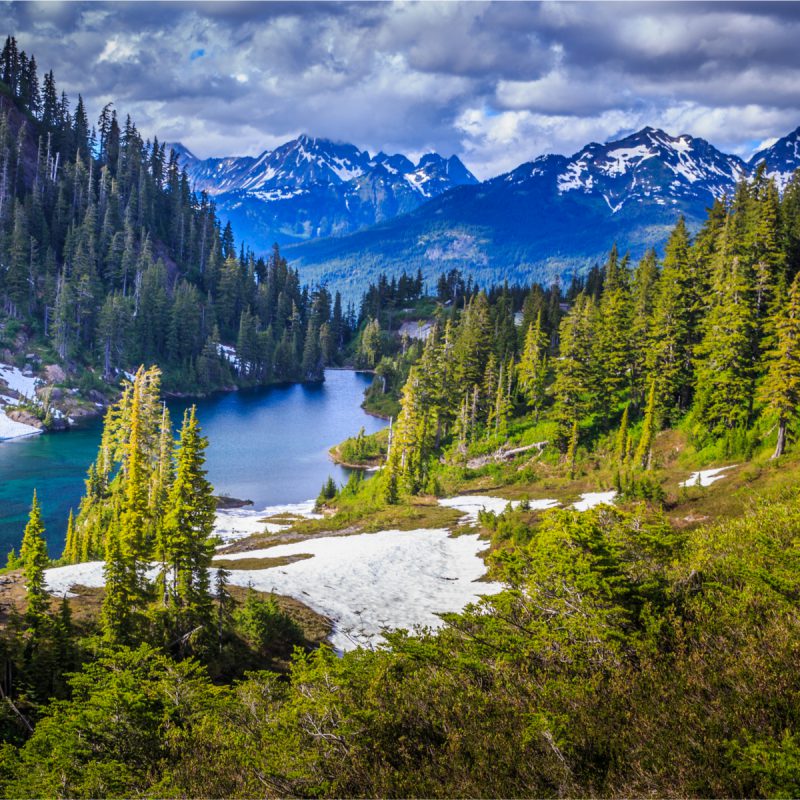Sustainability, conservation efforts, and environmentalism have become high-profile topics in recent years. However, efforts to protect nature have been in place for over a century in America. From the Conservation Movement of the 1800s, to the Climate Change Movement currently happening, American history is filled with people taking action to protect nature and save the Earth.
The Conservation Movement
Over a century ago, the Conservation Movement rose to prominence in the United States, with people learning to preserve natural resources and protect wildlife and land. As the country industrialized, and cities grew and expanded, people realized that nature, as well as the resources it provides, should be protected.
It was during this time that Henry David Thoreau famously wrote his novel “Walden” and spoke publicly about forest ecology. This helped spur other influential pieces of artwork and journalism that highlighted the beauty of nature. During this time, the Forest Reserve Act (which allowed the President to set aside forest land for public domain) was put into effect. Presidents Harrison, Cleveland, and McKinley used this act to transfer 50 million acres into the forest reserve system. Through art and legislation, people were beginning to notice the effects their actions had on nature, and were taking steps to lessen that impact and come closer to what we now know as sustainable living. As environmental conservation began to appear more prominently through the public, the amount of political discussion and action increased as well.
The 20th Century
Over the course of the 20th Century, environmental initiatives rose to even larger prominence. As the industrial revolution continued, urban landscapes and businesses expanded, polluting the atmosphere and causing deforestation that endangered many North American game species. As a result, protecting natural resources (particularly to ensure that game animals would remain available) became a larger element of political recourse. President Theodore Roosevelt put the National Reclamation Act into effect to put a large tract of barren land to use, and also established the United States Forest Service. Through these actions, as well as setting aside more land than any predecessor for national parks, President Roosevelt kicked off a century in which many people became environmentally aware and made moves towards living sustainably.
During the New Deal in the 1930’s, many conservation projects were launched under the federal government. This helped to promote sustainability by conserving land use and helping to develop natural resources. Following World War II, people became aware of the environmental costs of the material benefits they were now enjoying. As industry and agriculture were modernizing, and technology was being used more and more, people became aware that such actions would negatively impact the Earth. Scientists began closely studying how fossil fuel and oil usage, as well as the energy consumption of modern technology, would impact the Earth, publishing their findings for the public to learn from.
The 20th Century saw the rise of many prominent ecological organizations, such as Defenders of Wildlife and Greenpeace USA. The first Earth Day was celebrated in 1970. Created as a response to the damage that its founder, Gaylord Nelson, witnessed from oil spills in 1969, Earth Day has spread globally to become a day of awareness for many people. 1970 was also the year that the EPA (Environmental Protection Agency) was founded, giving the federal government a branch to assess and analyze environmental issues, and then educate the public about the environment and how to better care for it.
The Modern Climate Change Movement
Today, people are more conscious of environmental issues than ever before. Modern technology, such as social media, has allowed people to better connect, spreading awareness of issues such as climate change and energy conservation while inspiring one another to do something. The actions taken by American environmentalists have connected further to global conservation and environmental efforts, as people across the world come together to save it. Famous environmentalists such as Greta Thunberg have inspired many to make changes in their lives, and more people are becoming aware of issues and taking action every day. From subtle changes in daily life to massive clean-up efforts, people are doing more to live sustainably and help the Earth than ever before.
Of course, it isn’t just individuals taking action – businesses and governments are doing something as well. Companies across the globe are making changes to lessen their impact on the environment, and governmental organizations are raising awareness and informing the public. In 2009, the EPA formally recognized the impact that greenhouse gases have on the lives of Americans, and the US Global Change Research Program published findings on the effects of climate change, convincing more people to take these issues seriously.
We’re all in this together. Spreading awareness of environmental issues, and promoting sustainability for yourself and others, can change the world. Do something today, and help us make history.

